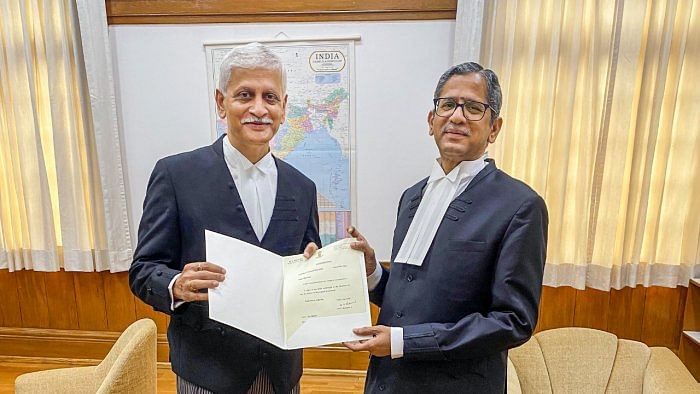
Justice Uday Umesh Lalit was sworn in as the 49th Chief Justice of India on August 27. He will have a brief tenure as the head of India's judiciary and would demit office on November 8 after holding the charge as the CJI for nearly three months.
Here are some important facts about him:
1. Justice Lalit was born on November 9, 1957, in Solapur, Maharashtra. He enrolled as an advocate by the Bar Council of Maharashtra and Goa in June 1983. He practiced in the High Court of Bombay till December 1985 before shifting his practice to Delhi in January 1986.
Also Read | CJI-designate U U Lalit promises transparency in SC case listing, Constitution bench around the year
2. Justice Lalit, now the 49th CJI, worked in the chambers of Soli J Sorabjee from October 1986 till 1992 and was on the panel of lawyers for the Union of India during the period Sorabjee was Attorney General for India. In April 2004, he was designated senior advocate by the apex court.
3. Justice Lalit primarily specialised in criminal law.
4. During his stint as a lawyer, he was appointed as the Special Public Prosecutor by the top court for the CBI to conduct trials in all the 2G spectrum scam cases.
Also Read | Wanted my name to be etched on people's hearts through conduct, behaviour: Outgoing CJI N V Ramana
5. He was appointed as an SC judge on August 13, 2014 and since then has been involved in delivering several landmark judgments.
6. One of the path-breaking verdicts Justice Lalit was part of was the August 2017 judgement by a five-judge Constitution bench which by a 3:2 majority ruled the practice of divorce through instant 'triple talaq' as "void", "illegal" and "unconstitutional". While the then Chief Justice J S Khehar and Justice S Abdul Nazeer were in favour of putting on hold the judgement for six months and asking the government to come out with a law to that effect, justices Kurian Joseph, R F Nariman, and Lalit held the practice as violative of the Constitution. Justices Khehar, Joseph, and Nariman have since retired.
7. The new CJI is also in favour of convening the Court at 9 am instead of the present time. Recently, a bench headed by Justice Lalit had assembled at 9.30 am, an hour earlier than the usual working hour of the apex court, to hear matters. "In my view, ideally we should sit at 9 in the morning. I have always said that if our children can go to school at 7 in the morning, then why can't we come at 9 am," Justice Lalit had observed.
8. In January 2019, he recused himself from hearing the politically-sensitive Ram Janmabhoomi-Babri Masjid land title dispute in Ayodhya.
9. A bench headed by Justice Lalit had ruled the erstwhile royal family of Travancore has the management right over the historic Sree Padmanabhaswamy Temple in Kerala, one of the richest shrines, holding that the rule of "heritability must get attached to a right of Shebait" (servitor) of the temple.
10. In another significant judgement, a bench headed by Justice Lalit had ruled that touching sexual parts of a child's body or any act involving physical contact with 'sexual intent' amounts to 'sexual assault' under section 7 of the Protection of Children from Sexual Offences (POCSO) Act as the most important ingredient is sexual intent and not skin-to-skin contact. uashing the controversial 'skin-to-skin' judgements of the Bombay High Court in two cases under the POCSO Act, the bench had said the high court erred in holding that there was no offence since there was no direct 'skin-to-skin' contact with sexual intent.
11. Justice Lalit was also on the two-judge bench which held that the prescribed 6-month waiting period under Section 13B(2) of the Hindu Marriage Act, for divorce by mutual consent, is not mandatory.
(With inputs from agencies.)